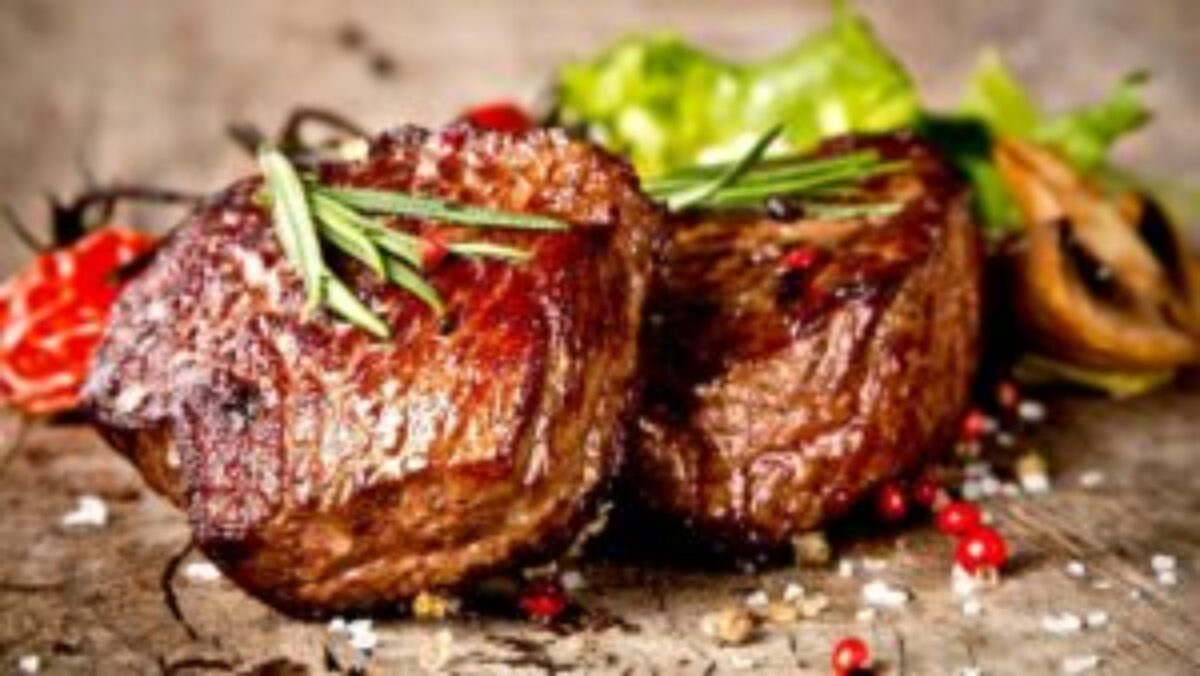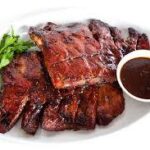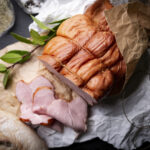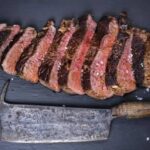
Biltong Vs Beef Jerky
For far too long, there has been no clear distinction between biltong and beef jerky. Many people believe they are synonymous adjectives for the same culinary delight, yet this couldn’t be further from the reality. At first glance, they may appear identical (after all, they are both dried and cured pork products, hence the mistake), but that’s where the similarities end, and they become completely different.
The meat for jerky is sliced extremely thinly and then gently dehydrated and fried on a rack at a low temperature. Biltong, on the other hand, is hung for up to a week to dry after being cured and marinated for 24 hours. It is left in thicker slices and allowed to dry gently before being sliced to the desired thickness. Some prominent distinctions are mentioned below.
As a Snack, is Biltong or Jerky Better for You?
The nutritional value of biltong is comparable to that of beef jerky. Both are high in sodium and protein but low in calories. Sugar is a strong contrastive factor. In contrast to certain jerky brands, which employ a lot of sugar in their marinade, biltong is created with no added sugar. That’s why, in most cases, Biltong is the better choice when it comes to your health. Nonetheless, jerky is remarkably similar to sugar-free beef biltong.
Its Flavour and Texture
Although the seasoning plays a significant role in determining the final flavour of jerky or biltong, the curing procedure necessary to manufacture biltong does transmit some flavour into the finished product, typically a hint of acidity from the vinegar.
Because of their unique drying processes, jerky meat and biltong meat have quite different flavours. Biltong meat has a strong flavour, while jerky has a smoky aftertaste that lingers in the mouth. Meat’s texture is altered by these drying processes as well.
The low-fat content of jerky makes for a more robust texture and a chew that is reminiscent of a good cut of steak. On the other hand, the fat level of the cut you select will determine the texture of the fatty biltong you eat. Meat from lean biltong will be tough and crumbly, while meat from fatty biltong will be tender and chewy.
Major Constituents
Vinegar is the star of the show when it comes to creating biltong. In fact, without it, you wouldn’t be able to keep the meat fresh. Common spices in biltong include cloves, allspice, pepper, ground coriander, and salt. This is a centuries-old recipe. Although sugar is generally considered unhealthy, it is not used in the traditional recipe. Jerky is made without the use of vinegar, unlike biltong.
Beef jerky typically has a high salt/sugar content and uses artificial flavourings to enhance the flavour of the meat while it is cooked in ovens or dehydrators. In a nutshell, jerky is spiced using marinades and/or spice rubs, while biltong uses more basic, all-natural spices and seasonings. Thus, both snacks begin with the same basic cut of beef but are drastically altered by the use of various cooking techniques and seasonings. And therein lies the rub, neighbours and friends.
Soft vs. Hard, Chewy vs. Soft
To facilitate the cooking and drying processes, beef jerky is typically chopped into strips first. Beef Biltong is air-dried as a whole piece and then cut into smaller pieces for eating. While beef jerky has a more steak-like chew to it, the drying and slicing process gives most biltong a softer, fluffier feel.
Steps of Preparation
Both beef biltong and beef jerky can be prepared from bison, hog, chicken, ostrich, antelope, and turkey, but beef is the original staple. Biltong and beef jerky look identical, but they’re made differently.
The thinly sliced meat is marinated, smoked, salted, and then cooked or dehydrated for 12 hours to make beef jerky. Salt draws out moisture and flavours of meat. Heating and dehydrating the meat makes it tough, so it’s commonly steeped in a salty-sweet marinade to add flavour and tenderise it.
Biltong is sliced thicker before being marinated in vinegar and spices, including salt, pepper, and coriander. It’s hanging up to dry after being left overnight (often for up to 5 days or more). Vinegar, salt, and spices in biltong, coupled with air-drying, cure and flavour the meat. Unlike beef jerky, biltong isn’t heated or smoked.
A Look at the Roots
Beef Biltong and jerky are centuries old. Biltong was found in South Africa in the 17th century by Dutch settlers who hung meat to dry with salt, vinegar, and spices. Biltong was the perfect nourishment for their lengthy trips over a bold new frontier.
Beef jerky may trace back to an Inca tribe called the Quechua, who invented the phrase ch’arki (which evolved into jerky). It’s dried beef. Quechua made jerky around the 1500s. When the first Europeans arrived in the New World, they discovered this sturdy, healthy new food source was perfect for travelling, and it quickly became a favourite snack and an American staple.
Today, snacking is more popular than ever before. People are also starving for creative snacks that have a wide range of flavours. That’s why there are so many novel snack options out there now. Make sure you take advantage of Excellent MSA Rump steak, aged to perfection and seasoned in a special sauce combination. Adds a signature barbecue flavour.
Items are sold in-store only. To locate the nearest retail outlet, you can also check out our website and tap the shop option.
However, the days of settling for mediocre snacks that lack both flavour and nutritional value are over. Those shopping for groceries today prioritise products that are both healthy and delicious. Beef jerky’s popularity has risen in recent years, and one reason is that it makes a great snack. Jerky is the ideal snack because it is convenient, high in protein, and delicious.







